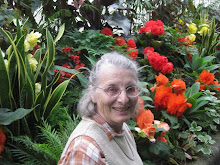Date: 13-14 March 2010
Since the Kiwi Consort has most weekends off, we have taken advantage of the time to explore this northern part of North Island. We went north up the east coast (Paihia and Witangi), then south to the Coromandel Peninsula's east coast (Tsunami, et al). Most recently we traveled north again, but on the west side of the northern part of North Island. (Are you following all this geography?)

Our first stop was to the tiny village of Matakohe and the Kauri Museum, highly recommended by locals. The kauri is a large tree heavily used by the early European settlers for buildings, ships, and

A massive undertaking, the museum presents a comprehensive picture of settlers' lives in early New Zealand. I was quite impressed with the size of the place. A complete working steam sawmill has been moved inside and rebuilt as well as an electric milking parlour complete with a cow manikin. Press a button and the machine starts milking the cow, yielding a white substance that courses through the tubes to the creamery can. Sorry, I just have a photo of the sawmill and not the cow.
To depict how people lived in early NZ, an entire boarding house was moved and rebuilt inside. The sleeping rooms open to picture windows featuring life-sized dioramas of the many types of people who used boarding houses, some as their domicile and others as

The manikins demonstrating the activities of the early settlers are strikingly realistic. The museum is supported by many of the descendants of
After a night in the unimpressive village of Dargaville, we drove north along the west coast and the longest sand beach in New Zealand. We resisted the temptation to visit the beach and stayed on
 The walk into the bush to visit Te Matua Ngahere (The Father of the Forest) took about 25 minutes. As I came up on the clearing, I was totally gob-smacked. With reputedly the largest girth of any tree in NZ (over 5 metres), the tree filled the entire visible space ahead of me. Compare the tree's trunk size with the couple with the umbrella in the lower right and note how it dwarfs all other trees around it.
The walk into the bush to visit Te Matua Ngahere (The Father of the Forest) took about 25 minutes. As I came up on the clearing, I was totally gob-smacked. With reputedly the largest girth of any tree in NZ (over 5 metres), the tree filled the entire visible space ahead of me. Compare the tree's trunk size with the couple with the umbrella in the lower right and note how it dwarfs all other trees around it.Further up the road, we stopped to see Tane Mahuta (Lord of the Forest). At 51 meters high, this tree towers above Te Matua Ngahere, but doesn't have nearly the girth. Can you imagine what this part of the country must have looked like when it was dominated by the kauri forests? Here is what it looks like now.
New Zealand has become a dairy country. Sheep are not forgotten but are far less agriculturally important than in a previous time. As we traveled south on a pass between the mountains we were reminded of this when we were stopped by a herd heading home for milking. The cheerful farmer escorted our car right through the herd.

Our first day out we stopped for a delicious lunch at the Sahara Cafe, located in the former bank of tiny Paparoa. On our way back we stopped there again for afternoon tea and stayed for evening "tea" (supper). We should have quit while we were ahead. Supper was a disappointment!
Cheers and aroha!
Kiwi Traveler











